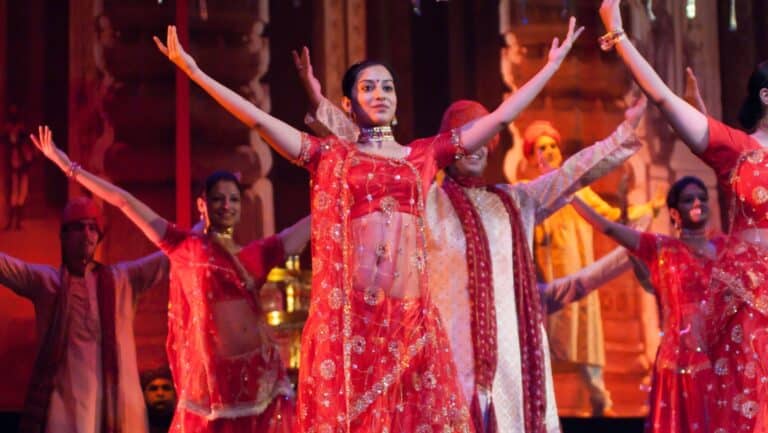What Makes the National Dog Show a Thanksgiving Favorite
The crowd hums, the groomers work in quiet rhythm, and somewhere backstage a handler whispers, “You’re the best dog;” the heartbeat of a Thanksgiving tradition begins. What began as a 19th-century showcase of breeding excellence has evolved into a Thanksgiving ritual watched by 20 million, uniting science, sport, and the timeless pull of companionship.
Thanksgiving morning television is a blur of movement: giant balloons gliding down Manhattan’s streets, bands marching in perfect time, kitchens filling with the scent of roasting turkeys. But tucked neatly between parade and football, a quieter tradition has captured the hearts of millions. The National Dog Show Presented by Purina has become as much a part of Thanksgiving as cranberry sauce and pumpkin pie, drawing families together to celebrate beauty, discipline, and joy in motion.
A History Spanning Centuries

To many, it’s simply a display of pageantry — dogs prancing in circles under bright lights, handlers in sharp suits, judges holding clipboards. Yet behind the glamour lies a world built on devotion, study, and history. The show’s roots trace back to 1879, when the Kennel Club of Philadelphia began promoting the breeding of purebred dogs “of sound body and mind.” The club predates the American Kennel Club itself and still holds one of the few remaining benched shows in America, where the public can meet dogs and handlers up close, providing a living classroom of breed education and preservation.
The modern television era began in 2002 when NBC decided to bring the show to Thanksgiving audiences nationwide. Viewers instantly embraced it. Today, more than 20 million tune in to see the competition unfold, cheering for favorites, learning about breeds they’ve never heard of, and feeling that unmistakable pull of joy that only dogs can inspire.
A Broadcaster Steps Into the Ring

Among those who help bring that joy to life is Mary Carillo, a veteran sports commentator known for her work covering the Olympics and tennis. When she first learned she’d be covering the National Dog Show, her reaction was pure delight.
“I’ve had dogs all my life,” she said, “but my education in the dog show world was entirely formed by the mockumentary classic Best in Show. Any chance I would have to enter that world was a chance I would take, and fortunately for me it happened.”
The Best Kind of Homework
Carillo’s lifelong love of dogs met its match in the precision of the show world. But before her first broadcast, she approached it like the athlete she was and is, methodically and thoroughly. “I immediately asked NBC Sports for DVDs of the previous ten Westminster Dog Shows so that I could get a feel for the rhythms and routine of the show,” she said. “I also bought 647 dog books. Then I met the fellow I was working with, David Frei, and my attitude and fears got a lot lighter.”
Her preparation paid off. Carillo quickly learned that the world of show dogs mirrors the intensity and structure of elite sports. “Human athletes are surrounded by trainers, coaches, physios, nutritionists,” she said. “They are finely tuned exemplars of their sport. It’s the same with all the breeds at the National Dog Show. They are the personification of their type, beautifully bred and trained for their jobs.”
What She Saw Up Close

Once inside, she was struck by the sheer discipline and harmony of it all. “More than anything I couldn’t believe how 2000 dogs could all be so beautiful and well behaved,” she said. “It still knocks me down, all these years later. I have three dopey dogs and, while lovable, they’re a total disgrace.”
Carillo’s humor only deepens her respect. As she observed, the handlers and breeders devote themselves fully to their dogs’ conditioning and presentation. “The casual viewer at home may not realize that the world of show dogs is anything but casual,” she said. “From the time a puppy is born, then recognized to have special qualities, then trained, groomed and finally introduced to a show ring… that is a lot of loving work and play. I am so respectful of the diligence and care that is involved in the process.”
The Buzz Behind the Benches

If the show ring is the performance, the benching area is its heartbeat. “The benching area is one of my favorite backstages in all of sports,” Carillo said. “There’s a lot of quiet activity that creates a constant low-level buzz. It’s where I get to walk the aisles, ask questions, pet dogs, watch them getting ready for the big show. The owners and handlers never fail to be generous with their time. The dogs never fail to make me smile.”
Even in defeat, she finds beauty. “It’s mostly the times when a dog hasn’t won their Breed or Group, and the people on the other end of the leash are telling them, ‘You did great. You’re the best dog.’ That gets me every time.”
More Than a Competition
What Carillo witnesses each year mirrors the show’s true purpose, not competition for its own sake, but stewardship. The Kennel Club of Philadelphia donates generously to canine charities and health research, reminding viewers that the show’s heart extends beyond the ring.
And for Carillo, that heart stays with her long after the cameras fade. “More than anything I come away from The National Dog Show realizing why these animals are so special, and how they rightfully take ownership of so much of our hearts,” she said. “I arrive back to my own dogs and tell them, one by one, ‘You’re the very best dog.’ They all take my word for it. I never said they were good at counting.”
Gather Round The Television & Root For Your Favorite!
The National Dog Show has become that rare thing; a Thanksgiving tradition that teaches without preaching, dazzles without pretense, and reminds us that excellence and love can exist side by side. Through voices like Carillo’s, viewers glimpse not just a showcase of canine perfection, but a world built on patience, partnership, and pride.
Tune into NBC after the Macy’s Thanksgiving Day Parade and join the spectacle.
Service Dogs Vs. Therapy Dogs: Key Differences You Need To Know

Service dogs are extraordinary animals trained to perform specific tasks to assist individuals with disabilities. Their role is not only vital for the independence of their handlers but also protected by federal laws, such as the Americans with Disabilities Act (ADA). From guiding visually impaired individuals to alerting those with medical conditions, service dogs demonstrate the incredible bond between humans and animals. This article explores the key aspects of service dogs, including their rights, training, and how they differ from therapy dogs and emotional support animals. Learn more.







